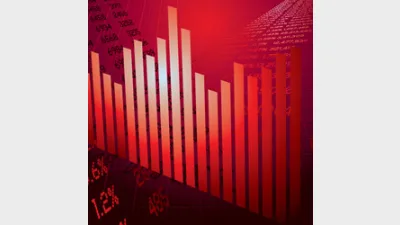Poor year for S&P/ASX300



Defensive stocks did their job over the financial year as the Australian sharemarket declined 7 per cent to 30 June 2012, according to Morningstar's institutional sector survey.
Resources performed the worst for the year, returning -28.5 per cent, followed by materials at -28 per cent and energy at -20.1 per cent, but telecommunications posted returns of 38.3 per cent, while utilities and healthcare posted 16.7 per cent and 10.5 per cent respectively.
The September quarter began a poor year for the S&P/ASX300, with the accumulation index down 11.6 per cent after two consecutive years of positive double-digit growth, Morningstar said.
A rebound in October 2011 due to plans to stabilise the Greek economy and positive news from the US was short-lived, but proved the best month for returns at 7.2 per cent but it did not stop the S&P/ASX300 plummeting to -6.7 per cent in May -the worst performing month for the year.
The median Australian share fund manager returned 0.5 per cent over the month to 30 June, -7 per cent over the financial year and 5.7 per cent over the three years to June 2012.
Investors Mutual topped the best performing large-cap Australian share strategies, returning 2.3 per cent for the year to 30 June, followed by Dalton Nicol Reid with 0.6 per cent and Bennelong which posted a negative return of -2.5 per cent.
Alphinity was best for large-cap Australian share strategies for June with 2 per cent, followed by Fidelity at 1.5 per cent and Perpetual with 1.4 per cent.
International sharemarkets were down in aggregate, with the MSCI World ex-Australia NR Index AUD posting -0.5 per cent for the year.
The best performing international share strategies were Magellan who returned 20.6 per cent, Principal with 7.2 per cent and Walter Scott with 5.3 per cent.
The Australian property securities sector returned 11 per cent over the financial year, while the UBS Composite Index returned -0.2 per cent for the month and 12.4 per cent over the year.
Recommended for you
Ethical super fund Australian Ethical has announced the appointment of Anthony Lane as chief operating officer.
The structural shift towards active ETFs will reshape the asset management industry, according to McKinsey, and financial advisers will be a key group for managers to focus their distribution.
ASIC has warned that practices across the $200 billion private credit market are inconsistent and, in some cases, require serious improvement.
A surge in electricity prices has driven the monthly Consumer Price Index to its highest level in a year, exceeding forecasts.










